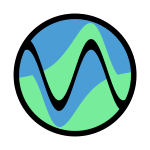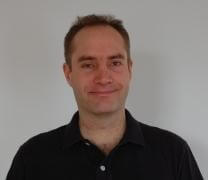Background
Ph.D., Civil and Environmental Engineering, University of California, Berkeley, 2005
M.S., Civil and Environmental Engineering, University of California, Berkeley, 2001
B.S., Mechanical Engineering, University of California, Berkeley, 1996
Dr. Talke’s research focuses on hydrodynamic processes and sediment transport in estuaries, rivers, and the ocean, using a combination of field research,data analysis, and modeling. He joined Portland State in September 2010 to analyze and model historical changes to tides in the Pacific Ocean, with a particular focus on west coast tidal stations such as Astoria.
A recent project at the University of Washington combined state-of the art thermal remote sensing with in-situ flow measurements to characterize turbulent mixing and coherent structures such as vortices and internal waves in a stratified tidal river. Results show how large-scale vortices bring elevated turbulent kinetic energy to the water surface. The research has implications for mixing processes (e.g., of sediment) and for air/water gas transfer (e.g., oxygen).
In Germany and the Netherlands, Dr. Talke measured and modeled sediment transport, focusing on how dredging-induced changes to depth altered tides, circulation, sediment trapping, and water quality in the Ems estuary. The increased oxygen depletion over the last 20 years was linked to anthropogenically-influenced increases in suspended sediment concentration.
Dr. Talke’s PhD thesis focused on tidal processes, turbulent mixing, and sediment transport in an intertidal area of S.F. Bay. Dr. Talke remains interested in small scale, turbulent mixing process, transport issues, and changes to coastal processes caused by climate and by local anthropogenic development.
Publications
An analytical model of the equilibrium distribution of suspended sediment in an estuary Incollection In: Dohmen-Janssen, C M; Hulscher, S J M H (Ed.): River, Coastal and Estuarine Morphodynamics 2008, pp. 403-411, London, Taylor & Francis, 2008. |
Hydrodynamics and morphology in the Ems/Đollard Estuary: Review of models, measurements, scientific literature, and the effects of changing conditions Technical Report Institute for Marine Atmospheric Research Utrecht (IMAU) (Report R-01-06), 2006, (prepared for Rijkswaterstaat (Ministry of Public Works, Netherlands), 78 pp). |
The influence of oceanic swell on flows over an estuarine intertidal mudflat in San Francisco Bay Journal Article In: Estuarine, Coastal, and Shelf Science, 58 , pp. 541-554, 2003. |
Courses
CE 361 – Fluid Mechanics
Credits: 4
Lecture and Laboratory: Properties of fluid; fluid statics; fluid dynamics; control volume and Reynolds transport theorem; conservation of mass, momentum and energy; differential analysis; rotational and irrotational flows, non-viscous and viscous flows, Navier Stokes equations. Lecture and laboratory.
Prerequisites: EAS 215 and Mth 256
CE 410/510 – TOP: Extreme Events in Environmental Water Resources
Credits: 4
Lecture: The flooding risk of coastal and inland communities depends on the total water level, which is influenced by factors such as land subsidence, sea-level rise, tidal variation, waves, tsunami exposure, river flows, storm surge, and other climate processes. In this course we will investigate both the physics and science behind extreme water levels, using both theory and analysis of actual data, and address the difficult problem of changing (non-stationary) risk. Statistical methods of assessing risk will be introduced, and case-studies of particular areas will be made. ‘Soft’ engineering measures to mitigate floods will be discussed. Students will be expected to complete a project that focuses on data analysis and/or numerical modeling. Local practitioners will be invited to give guest lectures.
Prerequisites:
CE 410/510 – TOP: Remote Sensing in Coastal and Inland Waters
Credits: 4
Lecture: Remote sensing is becoming increasing important in consulting practice, yet is still under- utilized in coastal and inland waters. This project based class will introduce students to different types of remote sensing techniques used in water resources, including fixed imagery, airborne imagery, and satellite imagery. The focus of the class will be to learn how to analyze remote sensing data products, using the matlab programming environment. Data filtering and error analysis will be covered. A particular focus will be using remote sensing data to understand physical processes. Areas of interest include (a) using infra-red data to assess turbulent structures and turbulence statistics; (b) using infra-red data to assess temperature gradients, upwelling, plumes, and other features in nature; (c) assessing water quality (turbidity, CDOM); (d) imaging and analyzing coastal waves using SAR data; (e) Analyzing flow using Codar and similar instruments; and (f) Analyzing mean sea-level and tides using satellite altimetry. For graduate students, the course will include a final, data based project. The class will include guest lectures by practitioners in the field.
Prerequisites:
CE 489/589 – Introduction to Advanced Fluid Mechanics
Credits: 4
Lecture and Laboratory: Advanced introduction to the geophysical fluid flows, including properties of seawater; conservation of mass, energy and momentum; dimensional analysis; the Navier‐Stokes, Reynolds and turbulent kinetc energy equations; geostrophy and potential vorticity; long and short waves; and turbulence and boundary layers. May be taken only once for credit.
Prerequisites: EAS 215, Mth 256, CE 361, and CE 362

